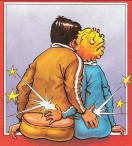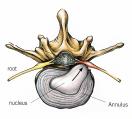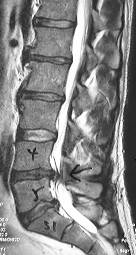
|
ALVIN HONG NEUROSURGERY |
|
Surgery for Brain, Spine & Nerves |

|
To Contact Dr Hong
Phone : +65 6733 8803 Fax : +65 6836 0949 Emergencies : +65 6535 8833 E-mail : dralvinhong@gmail.com |
|
Arthritis in the lumbar spine is very common. It may start off as an injury but in many people, it is the “wear and tear” that one gets over the years. Names for this condition include degenerative arthritis & osteoarthritis.
Back problems can produce 3 types of problems :
1. Back pain only. 2. Back pain with pain, down the legs, numbness or weakness. This is due to compression of the nerves as they leave the spine. The most common cause is a slipped or herniated disc, but bone spurs called osteophytes may do the same. Many people call this pain, sciatica, because it follows the course of the sciatic nerve. The correct medical term is a radiculopathy. 3. Back pain with tingling, numbness or weakness in the legs that start after walking a certain distance. This is due to narrowing of the spinal canal, usually from a combination of swollen degenerate facet joints and bulging degenerate discs. This condition is known as spinal canal stenosis and some people call the clinical picture spinal claudication.
Although the most useful investigation to look at the back is an MRI scan, abnormalities are found in almost everyone. Hence it is crucial the patient is seen first, to get a detailed account of the symptoms followed by a careful examination. This is to determine what the problem is, and in which part of the spine.
Surgery is done to free up the nerves, to treat pain, numbness or weakness in the legs. It is not done to treat back pain, which is due to the underlying degenerative disease. If there is weakness in the legs, the aim is to prevent more weakness and give the best chance of some improvement.
The most common operation is a microdiscectomy. Via a small incision, the prolapsed disc is approached from the back and any loose fragments are removed in order to ensure the nerve is no longer stretched. Many patients are up on the next day, and only spend 2 to 3 days in hospital.
Because only loose disc fragments are removed, there is a 10% chance of a 2nd prolapse. When this happens, a more extensive operation may be better, in which the disc is completely removed and fusion is done with titanium screws.
People with spinal canal stenosis may be helped by a laminectomy, to enlarge the spinal canal. Typically, the swollen facet joints are trimmed to give the nerves more room to run.
If there is very severe compression of the nerve roots or slippage of one vertebral body on the other, fusion may be needed using pedicle screws. |
Back Problems |



|
Diagram of prolapsed disc |

|
MRI scan showing prolapsed L4/5 disc |